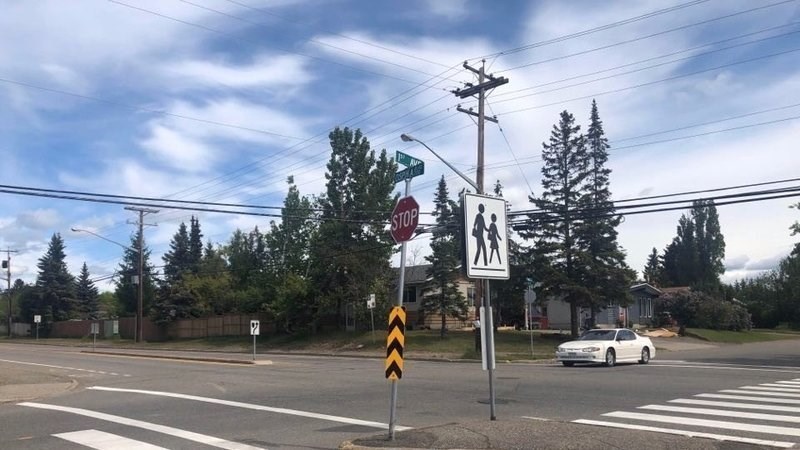The city needs to install 17 new marked crosswalks and upgrade 26 existing crosswalks to meet new national safety guidelines, according to a report going before city council on Monday.
To get the work done over the next 10 years will require more than tripling what the city currently spends each year on crosswalk improvements, city transportation supervisor Chris Vliegenthart wrote in his report.
"The city’s current Pedestrian and Traffic Safety Improvements Program is budgeted at $150,000 annually," the report says. "Funding under the existing program is not sufficient to meet, within a reasonable timeline, the current demand for new crosswalks and to upgrade deficiencies at existing crossings to satisfy the new (Transportation Association of Canada) Guide."
At the current spending level, it would take the city more than 35 years to install and upgrade the crosswalks to meet the new standards, Vliegenthart wrote. To get the work done in 10 years would require increasing the funding to $500,000 per year, he wrote.
Stretching the work out to 15 years would reduce the funding requirements to $368,500 per year, Vliegenthart added.
The cost of a single marked crosswalk can range from $5,000 for some signs and painted pavement markings, up to $300,000 for crosswalks with pedestrian-activated traffic signals. Funding for crosswalk improvements is part of the city's capital spending, not its operational budget.
Prince George currently has 169 marked crosswalks, excluding those at intersections with traffic lights and those on provincial highways, Vliegenthart wrote.
Staff conducted a review of the city's marked crosswalks based on the new guidelines released in 2018, as well as looking at 33 locations where members of the public have requested the installation of a new marked crosswalk. The number of requests received from the public has steadily increased, from less than 10 in 2015 to 54 in 2019.
"Staff consider many factors when completing crosswalk assessments, including public requests, collision history, land-use and pedestrian patterns," Vliegenthart wrote. "Priority is given where a pedestrian crossing has a collision history involving pedestrians."
The locations rated as high priority were Ospika Boulevard at Davis Road, First Avenue, Exhibition Park and Pinewood Avenue; Fifth Avenue at Stuart Drive, Watrous Street and Alward Street; 15th Avenue at Alward Street, Irwin Street and Ewert Street; Tyner Boulevard at the intersection with Baker Road and Gannett Road; Queensway at Connaught Drive; Massey Drive at Griffiths Avenue; and Domano Boulevard at the west end of Moriarty Crescent. In addition to the 14 high-priority locations, the city has 15 medium-priority and 14 low-priority locations in need of upgrades.
Upgrades at Ospika Boulevard at Davis Road and First Avenue are considered especially high-priority, and upgrades at those two sites is planned this year, Vliegenthart wrote. In June a petition was launched calling for upgrades to the intersection of Ospika Boulevard and First Avenue after an 18-year-old man was struck by a vehicle and seriously injured at the location.
The city's current crosswalk infrastructure were designed based on provincial guidelines from 1994 and TAC guidelines released in 1998. The new guidelines put more emphasis on pedestrian safety, the report says.
"The methodology of the 2018 TAC Guide focuses more on safe pedestrian movements and less on motor vehicle delays," Vliegenthart wrote. "In general, the 2018 TAC Guide puts less emphasis on the number of pedestrians using a crosswalk, and more importance on the crossing conditions pedestrians will need to navigate."



